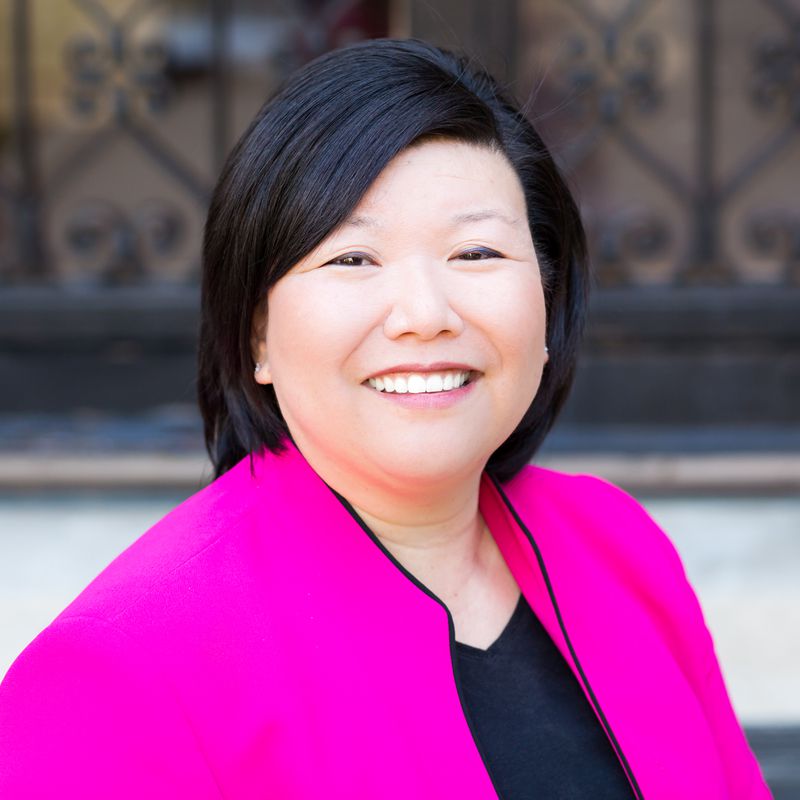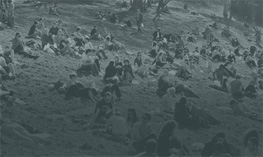Financial Insecurity in Asian American Pacific Islander Communities: An Untold Story of Racial Wealth Inequality
Written by Lisa Hasegawa, National Coalition for Asian Pacific American Community Development; Jane Duong, National Coalition for Asian Pacific American Community DevelopmentIn 2010, the Asian American and Pacific Islander (AAPI) community became the fastest growing ethnic group in the country. If this trend continues, the AAPI population will grow to be approximately 9 percent of the U.S. population by 2050 (up from 5 percent).1 At the same time, the last decade has shone new light on the devastating effects of poverty and economic insecurity on communities of color. Despite common misconceptions, the story is no different for more than 2 million AAPIs living in poverty and the many more that are living on the edges.
Take the Fonua family,2 Tongan immigrants living in Los Angeles. Since the recession, Mr. Fonua has seen his work hours decline by more than half in the construction industry. His wife has had to relocate to another city to find work as a full-time caregiver. And their youngest daughter has taken two part-time jobs to help pay the family’s rent and other bills. She does this while juggling full-time classes on the weekends, working toward her college degree. The family is working hard, but the goals of financial security and economic mobility still feel out of reach.
Understanding the Spectrum of AAPI Financial Well-Being
Like the Fonua family, many AAPI groups are struggling day-to-day to pay the bills, let alone save and invest in their future. The population of AAPIs living in poverty has grown by 38 percent since the Great Recession began (27 percent for Asian Americans alone and 60 percent for Native Hawaiians and other Pacific Islanders) — the largest increase among all ethnic groups — significantly higher than the 27 percent increase in the nation’s overall poverty population.3 AAPI concentration in low-wage jobs, particularly those in service industries such as restaurant and retail workers, taxi drivers, and domestic workers, also means fewer opportunities to move beyond poverty.
Opportunities to sustain and build wealth are also limited for many in the AAPI community. Between 2005 and 2009, Asian Americans lost 54 percent of their wealth, compared with a 16 percent decline for whites, much of it due to loss of home equity during the housing crisis.4 More recent data show that many Asian Americans have been able to regain some wealth since the crisis. However, existing data sources and related analysis fail to provide detail on specific sub-ethnic communities and as a result, AAPI groups that have been relatively more successful vastly obscure the experiences of AAPIs with less income or wealth. Aggregated data also fail to capture any nuance about the varied immigration histories of AAPI communities, which have been major contributing factors in their relative economic success. For example, recent U.S. immigration policy has greatly favored immigration from Asia of highly skilled and highly educated workers. By comparison, many refugees from Southeast Asia and migrants from the Pacific Islands are less likely to have higher education, transferable employment skills, and English language proficiency, which limited their economic prospects.
Financial insecurity persists and wealth-generating opportunities continue to elude many in the AAPI community. Homeownership has been a primary driver of wealth creation, but access to this important opportunity has been uneven within the AAPI community. For example, in 2013, the homeownership rate was 64.8 percent among Vietnamese households, but 43.7 percent among Hmong households; by comparison, the homeownership rate was 68.8 percent for whites and 45.2 percent for Latinos.5 Further, Pacific Islanders and many Southeast Asians continue to face major barriers to higher education, such as cost, limited English proficiency, or knowledge of the college preparation and application process, which limit opportunities for these individuals to move into higher paying jobs with better retirement benefits. In addition, the AARP Foundation finds that AAPI seniors are much more likely to be living in poverty and to hold significant housing debt, compared to the general population, further contributing to their household insecurity.6
According to an analysis conducted for “Scrimping + Saving,” a report of the National Coalition for Asian Pacific American Community Development (CAPACD), 14 percent of low- and moderate-income AAPI respondents had trouble paying bills or needed emergency cash in the last 12 months.7 Another 23 percent did not know where to turn to raise emergency funds or did not think they could raise them at all. Fully 56 percent of low- and moderate-income AAPI respondents did not know where to turn for financial advice or they turned to potentially unreliable sources such as the internet or family and friends, a risk that is exacerbated for AAPIs with limited English fluency and recent immigration status. The issue of language diversity and proficiency is particularly relevant for the AAPI population, which has the highest proportion of residents who speak a language other than English at home, spanning more than 40 different Asian languages.8 One in five AAPI households is linguistically isolated, meaning there is no one in the household age 14 or older who speaks English exclusively or “very well,” which is on par with Latino households.9 These linguistic challenges create barriers to financial health given their impact on earnings, job quality, access to health care, and the ability to use important social and government services. The different economic prospects across AAPI subpopulations reflect the broader income and wealth stratification within both the AAPI community, and the nation as a whole.
Race Matters: Working Together as Communities of Color
Because AAPI groups are lumped together as one group in data sets, study after study report AAPIs as generally doing the same or better than the general population and in relation to other communities of color. It has led some to claim that race no longer matters and that institutional racism has been dismantled. The reports of National CAPACD and others, and the daily experiences of the network of organizations that make up our national coalition prove otherwise. Including a more nuanced analysis of AAPI data is critical for reasserting that race indeed does still matter and racial discrimination still has major effects on access to opportunity and life outcomes.
AAPI communities face specific challenges in achieving financial security, and their fates are inextricably tied to the experience of African Americans, Latinos, and other communities of color. The Civil Rights movement expanded opportunities for African Americans and brought greater awareness of the need for investments in urban neighborhoods. It also overturned many of the discriminatory policies that stood in the way of economic opportunity for AAPI communities. Segregation and discrimination led to the development of the first Chinatowns in the country, and AAPIs have always lived with and alongside other communities of color. This is particularly true for AAPI households living in poverty. More than 57 percent of Asian Americans and 62 percent of Native Hawaiians and Pacific Islanders live in neighborhoods in which the majority of residents are people of color.10 Despite mainstream media’s attempt to pit AAPI communities against other communities of color, our communities have collectively experienced not just urban disinvestment, but the devastating effects of the foreclosure crisis, which have stripped decades of wealth from our communities and further exacerbated the income and wealth divide.
AAPIs must work together alongside other communities of color to invest in promising policies that create systems and infrastructure where all communities are able to thrive. First, federal agencies need to invest in improved data collection systems to more effectively capture the diversity of experiences within the AAPI community. This would include clearer directives from the Office of Management and Budget on the collection of race and ethnicity data. For example, additional data through the Home Mortgage Disclosure Act (HMDA) or small business lending could provide a more accurate picture of which AAPI subgroups are accessing mortgages and small business loans. Where relevant, data collection should include oversampling in specific geographic regions to capture the full complexity of AAPI experiences and avoid the problems arising from samples that are too small for reliable estimations. With this data, we will be able to better quantify and design holistic solutions for improving financial well-being in the AAPI community. In addition, given the lack of English language fluency among many AAPIs, federal policies that support improved language access and enforcement of Title VI regulations are fundamental.11
We must continue to strengthen the regulatory framework to ensure that predatory lenders are not allowed to proliferate and strip wealth from communities. In addition, we must work closely with financial institutions to create an inclusive system that allows low-income AAPIs and other communities of color to successfully save and invest in their future. Financial institutions can improve language access in bank branches, create alternative financial products such as peer lending circles, savings groups, credit building tools, or other strategies that embrace the multigenerational nature of many AAPI households, or consider alternative underwriting standards that capture how AAPI households live and run their businesses. For example, Asian Americans For Equality (AAFE), a community-based organization and community development financial institution (CDFI) in New York City has developed a more culturally relevant model for successfully underwriting AAPI-owned small businesses. The model considers inventory as a financial indicator in addition to business income. Lifting up these types of lessons can help the financial sector develop tools that better meet the demands of a growing AAPI community.
Strengthening Community-Based Organizations to Deliver Linguistically and Culturally Appropriate Services
Community-based organizations (CBOs) are a critical component of building financial security for AAPI communities and require greater investment by the public and philanthropic sector. CBOs are at the forefront of innovation and are constantly testing promising solutions that embrace the complexity of how AAPIs live and thrive in American society. These solutions support community members in overcoming barriers, such as language access and education, and honor the cultural experiences of the AAPI community. For example, National CAPACD is currently partnering with eight CBOs across the country to bundle traditional immigrant integration services, such as citizenship and English classes and workforce training, with financial education and coaching.12 Further, National CAPACD’s program partners combined their financial education with Mission Asset Fund’s Lending Circle model (see José Quiñonez’s essay in this book) to enhance financial capability in low-income AAPI communities. The Lending Circle approach combines the traditional practice of peer lending familiar to AAPI communities and combines it with financial coaching and education. According to data collected, participants saved an average of $535 in six months, and the aggregate repayment rate was 98.4 percent, indicating that almost all participants were able to build their credit because of successful on-time payments.13
Similarly, Hawaiian Community Assets successfully developed a financial education curriculum, Kahua Waiwai, which incorporates traditional Native Hawaiian cultural concepts to convey financial information. The curriculum has been highly successful in engaging both adults and youth in financial conversations and has been a platform for creating innovative financial products such as credit-building and other alternative savings tools. In Queens, New York, Chhaya CDC formed with its peers the Northwestern Queens Financial Education Network to serve the diverse immigrant population in their neighborhood. Its programs offer comprehensive financial education and coaching paired with legal services for community members who may have been victims of financial harm. They also monitor financial trends in the community. Similarly, the Little Tokyo Service Center in Los Angeles has leveraged their expertise in counseling AAPI seniors to provide financial education and coaching that helps seniors avoid predatory lending and protect their assets.
Examples like these reflect the extraordinary opportunity to work in partnership with local practitioners to design solutions that not only benefit individual community members, but also create opportunities to build solutions that cross ethnic lines within neighborhoods and communities. To go even further, we must find new partners representing a broad range of sectors, from housing and health to education and government. Alongside strong regulatory policies and inclusive financial institutions, we can promote a broader system of equity in which AAPI and all other communities are able to participate and thrive.
NOTES
- U.S. Census Bureau, “National Population Projections 2008.”
- Names have been changed to protect the identity of the family. The Fonuas are clients of Empowering Pacific Islander Communities in Los Angeles, California.
- Josh Ishimatsu, “Spotlight: Asian American and Pacific Islander Poverty.” (Washington, DC: National Coalition for Asian Pacific American Community Development, June 2013).
- Rakesh Kochhar, Richard Fry and Paul Taylor, “Wealth Gaps Rise to Record Highs between Whites, Blacks, and Hispanics” (Washington, DC: Pew Research Center, July 2011). Data on Native Hawaiian and Pacific Islander wealth were not available in the report.
- U.S. Census Bureau, 2013 American Community Survey, 1-Year Estimates Selected Population Profiles, S0201.
- AARP Foundation, “Are Asian Americans and Pacific Islanders Financially Secure?” (Washington, DC: AARP Foundation, December 2014).
- Alvina Condon et al., “Scrimping and Saving: A Report on Financial Access, Attitudes, and Behaviors of Low- and Moderate-Income Asian Americans and Pacific Islanders” (Washington, DC: National Coalition for Asian Pacific American Community Development, Spring 2015).
- Karthick Ramakrishnan and Farah Z. Ahmad, “Language Diversity and English Proficiency.” (Washington, DC: Center for American Progress, May 2014).
- Ibid.
- Ishimatsu, “Spotlight: Asian American and Pacific Islander Poverty.”
- Title VI of the Civil Rights Act of 1964 prohibits discrimination on the basis of race, color, and national origin in programs and activities receiving federal financial assistance. National origin discrimination includes, among other things, failing to provide meaningful access to individuals who are limited English proficient.
- The eight CBOs are Asian Economic Development Agency (AEDA), Asian Services In Action (ASIA), Center for Pan Asian Community Services (CPACS), Chhaya CDC, Chinese American Service League (CASL), Chinese Community Center (CCC), Hawaiian Community Assets (HCA), and Korean Resource Center (KRC).
- National Coalition for Asian Pacific American Community Development, “The Critical Moments of Immigrant Integration” (Washington, DC: National CAPACD, Spring 2015).





